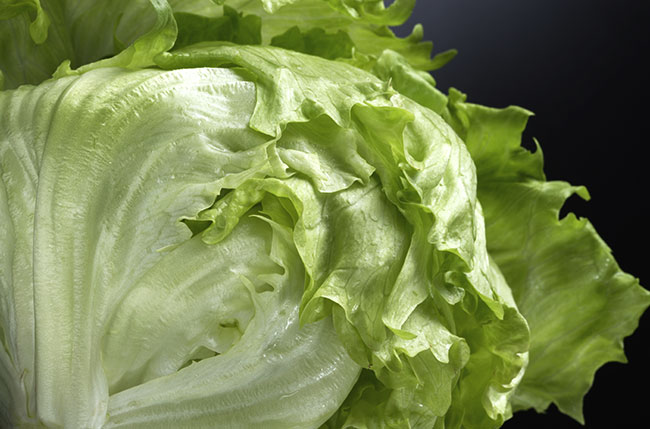
Lettuce was first cultivated by the Ancient Egyptians who valued the plants for the oil in the plant’s seeds. Egyptians transformed lettuce from a weed to a valuable crop. The plant was venerated as a symbol of virility and was associated with fertility rites. The Romans valued lettuce for similar reasons, and lettuce leaves were used to adorn the gardens and tables of the wealthy. Greeks however held an opposite view of lettuce. They believed the plant was associated with infertility and impotence. The English name for lettuce comes from the Latin latuca, which meant “milky.” This name was a reference to the white substance produced by the plant’s stems. This substance is known as latex (not to be confused with rubber latex), lactucarium, and lettuce opium due to its mild narcotic effects. This substance was used by Ancient Egyptians and Romans as a sleep aid and sedative. There is not enough of this chemical in cultivated lettuce leaves to have any effect on people. Some wild lettuce varieties do have a very mild sedative effect on people, however. In the middle ages, herbalists considered lettuce to be a medicinal herb, and they claimed lettuce had many health benefits, from reducing pain to curing coughs. American colonists believed that lettuce could prevent the spread of smallpox. Lettuce may not be able to cure smallpox, but it does have real health benefits. Lettuce is a low calorie source of many different vitamins and minerals. Prior to the 1920s, lettuce was sold in the vicinity of where it was grown because lettuce wilts quickly if it’s not refrigerated. Advances in refrigeration and transportation technology have allowed for lettuce to be transported, making it available year-round, worldwide. Varieties of lettuce include looseleaf, romaine, butterhead and crisphead. Looseleaf, also known as leaf lettuce grows in large, crispy leaves. Romaine lettuce is closely related to the first cultivated lettuce. Romaine lettuce grows long, narrow leaves that are loosely bound together, and they contain thick ribs that make the lettuce exceptionally crispy, but also slightly bitter. Butterhead grows loosely bunched, soft leaves. As their name implies, butterhead lettuce has a soft, smooth texture. The two most common types of butterhead lettuce are bibb and Boston. Crisphead lettuce grows in tight heads made of crispy leaves with very mild flavor. The most common form of crisphead is iceberg lettuce.
Lettuce is used both raw and cooked as a component of salads, soups and sandwiches. The traditional Roman way of preparing lettuce was to poach hearty heads of romaine lettuce, and dress them with a hot mixture of oil and vinegar. Raw salad is probably the most common use for lettuce, and lettuce is often considered synonymous with salad. Whole or shredded lettuce leaves are a common topping for sandwiches, burgers, tacos and burritos. Crisphead lettuce is generally used for this purpose, but a couple leaves of bibb lettuce can take a sandwich to the next level. A good way to cut carbs is to use leaves of lettuce as a replacement for bread or buns for sandwiches or burgers. Grilling lettuce adds flavor and texture to a salad. This is typically done with hearty romaine lettuce. When grilled, romaine lettuce develops a sweet flavor. Grilled romaine is often served with a dressing made from feta or blue cheese. A particularly excellent grilled lettuce recipe involves grilling romaine hearts, dressing them with lime juice and topping with slices of avocado.
Pick lettuce that is crisp but not dry. Do not use lettuce that shows any signs of browning. Store in the refrigerator where it will last about a week. Leaf lettuce and butterhead lettuces should be used as soon as possible because they will not last as long as romaine or crisphead. Living lettuce is sometimes available. This is the freshest possible way to buy lettuce, as it is sold with the roots still attached and the plant still growing. Fresh lettuce is often dirty, so thoroughly washing lettuce before use is highly recommended. A salad spinner is a helpful tool for cleaning lettuce quickly. Soak lettuce in ice-cold water immediately before serving it to make the leaves crispy. This is not recommended for butter lettuces however, as it will ruin its delicate texture. Tearing lettuce is preferable to chopping it, because chopping it can bruise the lettuce, especially delicate lettuces like bibb and Boston.


 BACK TO PRODUCTS
BACK TO PRODUCTS